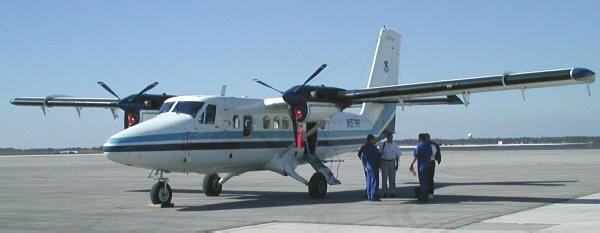|
|
| DeHavilland UV-18
Twin Otter |
|

|
The UV-18A 'Twin Otter' is
the military version of the DeHavilland DHC-6. Most have optional
float and ski fittings. The aircraft have crew and passenger
oxygen systems and a navigation/communication package which
gives it an all-weather capability. It has a cruise speed of 150
knots, a service ceiling of 25,000 feet and a range of 700
miles. Designed to replace DHC-3, DHC-6 made its first flight on
May 20, 1965. This general-purposed civil and military
transport, used by regional airlines in Alaska and other areas
with short or rough runways, entered production early in 1966.
By September 1982, over 800 DHC-6 were built, and by the end of
production in 1988 a total of 844 aircraft were built for
various military and commercial customers.
Airlift support for the US Air Force
Academy cadet parachuting program is provided by three UV-18B
aircraft which carry a pilot, copilot and up to 17 jumpers.
These Twin Otters are the only three owned by the Air Force. In
the MSAG Antenna Test and Evaluation conducted 25-31 August 1998
in Marina CA, the NPS/CIRPAS UV-18A Twin Otter provided the
surrogate UAV function during a test and evaluation of the MSAG
ITT Antenna under development by the Joint Projects Office.
Imagery from the Twin Otter was received by the multi- source
capable antenna based at the CIRPAS facility in Marina. In the
Alaska Army National Guard the UV-18As have been replaced by the
C-23B+.
|
|
